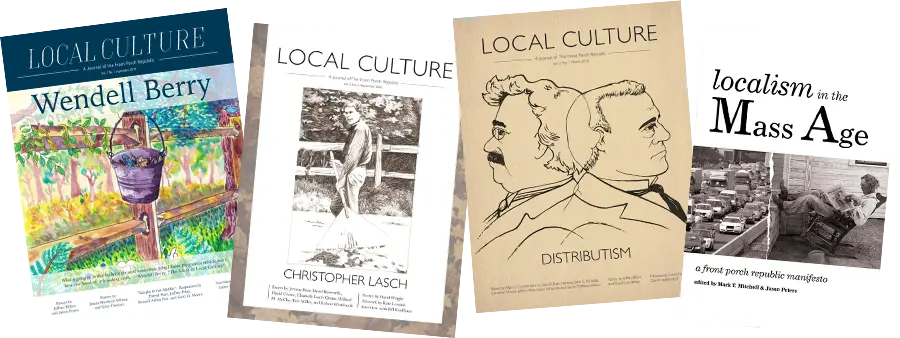“Less Than Angels.” Nic Rowan has quite the experience at Bryan Johnson’s Don’t Die summit: “Eventually the whole crowd gathers around Johnson, chanting, Don’t die! Don’t die! Don’t die! At this moment, anyone else would have looked like a cult leader, but not Johnson. A friend who danced with him at a conference in Florida describes his manner as that of “the most divorced man alive.” This presents too human an image. In the middle of a crowd, dripping wet under the strobe lights, Johnson appears luminous, otherworldly, as if the baby in Eraserhead grew up and sprouted a shock of black hair. Were he not the world’s healthiest man, I would think he is sick, very sick.” I can assure you that FPR conferences foster a rather different vibe.
“Are You Ready for the AI Apocalypse?” Chris Watkin distills some wise lessons that AI should teach us: “The real AI apocalypse, the true exposé of our human condition, isn’t the rise of killer robots. It’s about the unveiling of our hearts, our priorities, our idols, and our hopes. Are you ready for that, for what AI might reveal about your view of humanity, work, or God? Like a scalpel, AI cuts us open, revealing our real priorities and values in new and uncomfortable ways.”
“Neil Postman’s Tips for Tech.” Joshua Pauling draws out some lessons from Postman to educate students to live well in a technological society: “He saw American society becoming a technopoly—a stage of civilization in which technologists and engineers direct the control of industrial resources, the reform of financial institutions, and the reorganization of social systems. In such a society, technology becomes a totalizing mode of existence and education is reduced to a transactional and mechanistic framework directed towards economic ends. Postman paired his critique with solutions modeled from his own classrooms. Though decades old, they remain relevant in the digital era for educators, students, and anyone who engages with technology in order to learn.”
“What Happened When I Tried to Replace Myself with ChatGPT in My English Classroom.” Piers Gelly describes how students responded when he invited AI into their classroom. The results are strangely hope giving: “Rather than taking an “abstinence-only” approach to AI, I decided to put the central, existential question to them directly: was it still necessary or valuable to learn to write? The choice would be theirs. We would look at the evidence, and at the end of the semester, they would decide by vote whether A.I. could replace me. What could go wrong?” (Sorry about all the AI articles. Can you tell I’m working on two book projects related to AI right now?)
“Christian Colleges Shouldn’t Operate Like Businesses.” Elizabeth Stice reviews Capitalizing on College: How Higher Education Went from Mission Driven to Margin Obsessed by Joshua Travis Brown: “Many people bemoan the drift of elite schools away from their religious roots, but these same people often make little effort to support schools that remain committed to religious distinctives. Bystanders seem to think that schools fail because they fall away from Christian commitments, but evidence suggests that the dangers confronting most tuition-driven schools are economic, not ideological.”
“Bad Neighbors.” Daniel Luttrull describes how he found himself being a father of six children and a needy neighbor: “What had started out as a kind of confused attraction toward the Catholic Church had achieved piercing clarity. On the one hand was the transcendent beauty of Catholic tradition and worship and charity. On the other hand was the terrible demand of the Church that I cede control of my life and become vulnerable to the sorts of overwhelming responsibilities that could further render me a bad neighbor.”
“The Birth of the Attention Economy.” Jake Lundberg pulls from the Atlantic archives to look at some of the concerns nineteenth-century Americans had with cheap newspapers: “The rise of the cheap, daily newspaper in the 19th century created the first true attention economy—an endless churn of spectacle and sensation that remade how Americans engaged with the world. Although bound by the physical limits of print, early newspaper readers’ habits were our habits: People craved novelty, skimmed for the latest, let their attention dart from story to story. And with the onset of this new way of being came its first critics.” (Recommended by Ken Myers.)
“Mars Hill Audio Journal, Volume 165.” In the new issue of the journal, Ken Myers talks with a couple of FPR authors: yours truly, about Words for Conviviality, and Nadya Williams, about Mothers, Children, and the Body Politic. Every time I talk with Ken, I walk away with a long list of books that I really need to read. FPR partners with Mars Hill, so readers can sign up for an affiliate membership.
Reading the Times Speaking of audio, I recorded an audio version of my 2021 book, and that is now available on all the major platforms (Audible, Spotify, Hoopla, Libby, etc.).
“Reimagine Rural.” Tony Pipa has launched season three of his podcast looking at rural challenges and opportunities and policies. The first two episodes look at places in North Carolina that are recovering from Hurricane Helene.
“Rooted Living in a Shallow Age — A Shepherd’s Guide to the Good Life.” Brett McKay talks with James Rebanks for the podcast Art of Manliness: “In a world that often feels dominated by technology and constant change, it’s easy to forget that some people are still living by the rhythms of ancient traditions. James Rebanks, an author and shepherd, is one of them, and in today’s episode, he shares what following a way of life that has endured for thousands of years can teach us about modern life and the things that matter.” (Recommended by Brian Miller.)
“The Autoworkers Want Their Union Back.” Frannie Block reports on the split opening up in the UAW: “Hit hard by the 2008 financial crisis and factory jobs moving overseas, the UAW was forced to look to other industries to stay alive. Now, less than a third of its current members are autoworkers, aerospace engineers or agricultural workers, the union’s blue-collar base. They are far outnumbered by a hodgepodge of white-collar defense attorneys, librarians, roughly 100,000 people working in higher education, and more. The diversity strategy worked for a while. Now, though, under UAW president Shawn Fain, there is a chasm between the union’s traditional autoworkers, who are moving toward the political right, and its newcomers, who are less likely to have worked a factory shift and more likely to have been involved in campus activism and the message boards of the Democratic Socialists of America.”





